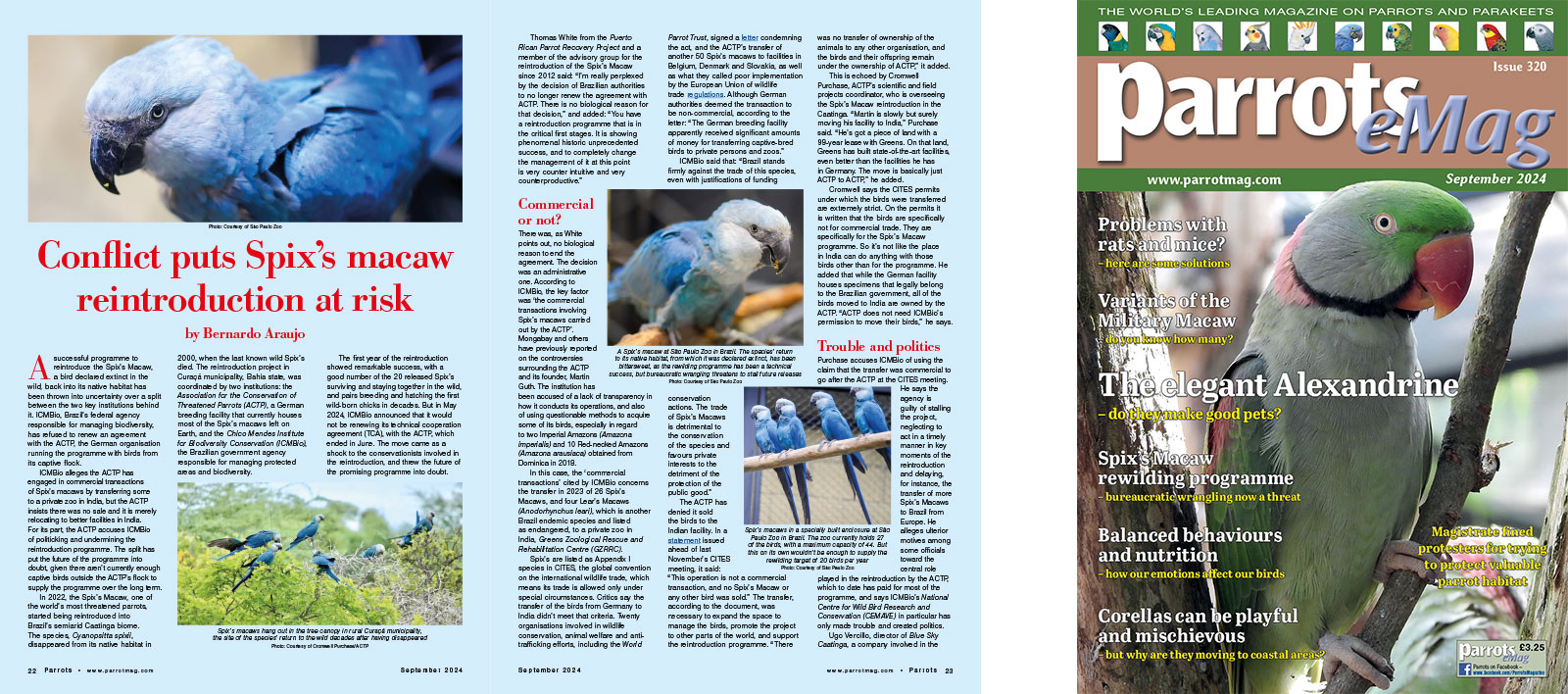
By Bernardo Araujo
A successful programme to reintroduce the Spix’s Macaw, a bird declared extinct in the wild, back into its native habitat has been thrown into uncertainty over a split between the two key institutions behind it. ICMBio, Brazil’s federal agency responsible for managing biodiversity, has refused to renew an agreement with the ACTP, the German organisation running the programme with birds from its captive flock.
ICMBio alleges the ACTP has engaged in commercial transactions of Spix’s macaws by transferring some to a private zoo in India, but the ACTP insists there was no sale and it is merely relocating to better facilities in India. For its part, the ACTP accuses ICMBio of politicking and undermining the reintroduction programme. The split has put the future of the programme into doubt, given there aren’t currently enough captive birds outside the ACTP’s flock to supply the programme over the long term.
In 2022, the Spix’s Macaw, one of the world’s most threatened parrots, started being reintroduced into Brazil’s semiarid Caatinga biome. The species, Cyanopsitta spixii, disappeared from its native habitat in 2000, when the last known wild Spix’s died. The reintroduction project in Curaçá municipality, Bahia state, was coordinated by two institutions: the Association for the Conservation of Threatened Parrots (ACTP), a German breeding facility that currently houses most of the Spix’s macaws left on Earth, and the Chico Mendes Institute for Biodiversity Conservation (ICMBio), the Brazilian government agency responsible for managing protected areas and biodiversity.
